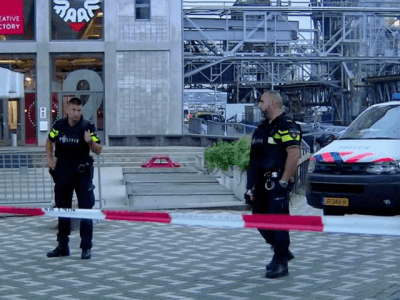
Counter-Terrorism Coordinator: Terrorism still a real threat in Netherlands
There are still jihadists who are making plans to commit an attack in the Netherlands, the national coordinator for counter terrorism and security NCTV said in its latest threat assessment. The chance of an attack in the Netherlands remains real, and the threat level is therefore still at 4 on a scale of 5, NOS reports.
According to the NCTV, the remaining threat is shown by the arrest of seven men in September last year. These arrests are believed to have foiled an attack. The ‘September 27 cell’, as the NCTV refers to the group, shows that the jihadist struggle continues after the fall of the ISIS caliphate, also in the Netherlands. Members of this group did have contact with other jihadists in the Netherlands and abroad, but they seem to have operated alone and did not share their plans. “The size of the cell is striking. A terrorist homegrown cell of this size with a ambitious plan of attack has not occurred in the Netherlands since 2006”, the NCTV said.
The Dutch jihadist movement currently consists of over 500 people and several thousand sympathizers, according to the NCTV. Around 135 Dutch jihadists are still in Syria. The group of Dutch jihadists is not growing anymore. While there is still a slight growth of young people, there are also people who turn away from it.
The NCTV also noted the growth of Salafism, an orthodox movement in Islam. “The Netherlands have dozens of salafist ‘boosters’ who preach intolerance or hatred off- and online and can thus eventually incite radicalization and extremism.” Some of these preachers condone violence and contribute to a climate in which jihadist views can flourish. “Through framework training, they try to train young Muslims to become leaders, so that they can take key positions in Dutch society in the long term”, the NCTV said.
According to the NCTV, Salafism is growing partly due to the polarization with right-wing extremist circles, who use Salafism to stir up a fear of Islam. “In their turn, Salafist leaders constantly refer to Islamophobic narratives to reinforce their own message.”
The NCTV noted that it is increasingly being proposed to bring back jihadists’ children from the war zone in Syria and Iraq. But the Netherlands is sticking to its position: “If individual EU member states decide to proceed with repatriation, this does not necessarily mean that the Netherlands must follow suit, because individual member states can apply their own policies.” The NCTV still believes that jihadist women pose a real threat because they helped to facilitate the armed struggle.
Over this past year, six terrorist attacks were committed in Western Europe, far fewer than the nearly 20 attacks in 2017. The attacks also resulted in few deaths, mostly in injuries. In the Netherlands, for example, two American tourists were stabbed at Amsterdam Central Station in a terrorist attack last year. Both were injured, but no one was killed. The attack on the Christmas market in Strasbourg was an exception in that respect.
The NCTV points to an increased interest in the use of chemical and biological weapons, but as it is complicated to commit an attack with such a weapon, the threat is not yet very effective. The NCTV also warned against the use of drones by jihadists. Although no concrete plans are known, events surrounding Gatwick airport late last year showed how vulnerable society is in this area. At Gatwick airport a drone flyer easily paralyzed air traffic because the police could not figure out his intentions.
According to the NCTV, a total of 300 Dutch men and women went to be foreign rebel fighters in the Syrian civil war. Of them 55 returned to the Netherlands and 85 were killed. Around 135 Dutch jihadists are still in Syria – some 15 in Kurdish refugee or detention camps, 85 with ISIS, 30 in al-Qaeda groups, and 5 living elsewhere in Syria. 20 Dutch jihadists are in Turkey.
There are at least 200 children with a Dutch link in Syria or Iraq. 170 of them are in Syria, of which 95 with ISIS, 50 with al-Qaeda, and at least 25 in Kurdish refugee camps. Three quarters of these kids were born in the war zone. 30 of them are in Turkey.
Source: NL Times





